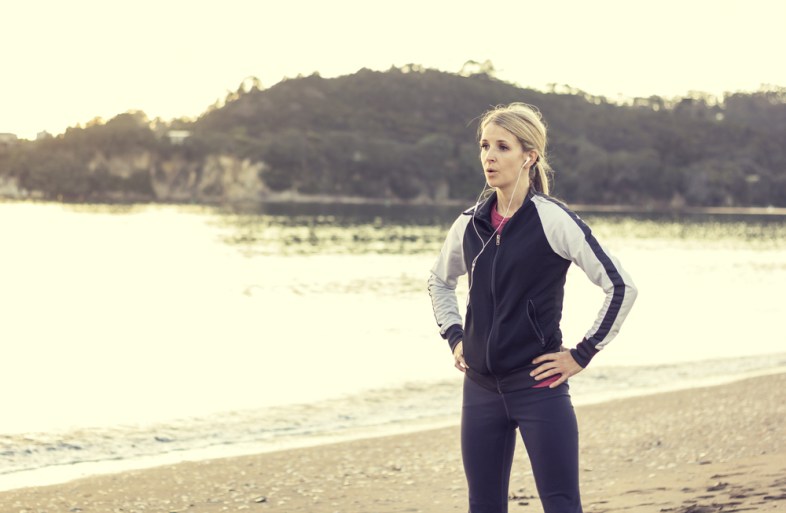4 Research-Based Ways To Make New Habits Stick


Everyone knows change is hard.
If you want to achieve your goals, you have to learn how to delay gratification, step out of your comfort zone and overcome resistance to change.
But what’s even harder is making change stick.
Saying no to a cigarette. Keeping the pounds off. Ignoring that website. That’s the real challenge.
Or is it?
Behaviour by Design
If you’re a regular reader, you’ll know how to change your habits, but the question is, how do you make change stick?
Simple: You make them easier for yourself.
In one study, university students only got vaccinated after they had been given a map to the health centre. That one little thing made a big difference in their behaviour; it was their Tipping Point.
There are four “little things” that can make a big difference when making new habits stick.
These are how you prime yourself to act differently, the defaults you set up, the commitments you make, and the norms of those you surround yourself with. [1]
Let’s discuss each in detail.
1. Priming
Our habits are often influenced by unconscious cues. If there’s a candy bar in plain sight in your refrigerator, you’re primed to eat it.
Companies are constantly nudging and priming us into buying their goods and services.
In one study, supermarket customers had their selections influenced by stereotypical French and German music. When French music was played, French wine outsold German wine, and when German music was played, sales reversed. [2]
You can prime behaviours you want by redesigning your environment. Become a Choice Architect and make behaviours you want accessible and behaviours you don’t want inaccessible.
Example: If you want to stay hydrated, leave bottles of water around your house.
2. Defaults
In general, we’re pretty lazy and usually contend to do whatever is the present option.
Given a choice between ordering a take away and preparing a healthy meal, fast food trumps fresh salad because it’s easier.
A lot of us “go with the flow” because the easier a behaviour, the easier it becomes our default.
Defaults are used for organ donations. When countries use “opt out” systems, organ donor rates increase. [3]
“Defaults are passive commitments”, writes Paul Dolan, author of Happiness by Design, “You rarely notice them”. That’s because seldom do we decide what our defaults are going to be. [4]
To make new habits stick, you need to make small adjustments to your life so that going with the flow is consistent with your new behaviour.
Example: Sick of social media? Un-tick the “Remember my password” box on your browser.
3. Commitments
Good follow through depends on more than the right intentions; it depends on the right incentives.
And nothing incentivises us like publicly accountability.
Like the Hawthorne employees, when observed, we work harder to achieve our goals.
You want to be consistent with your public promise, right?
Then get accountable.
Set a goal where you have some degree of control over the outcome, such as your physical health or running a half marathon, and commit to ONE change. Don’t put yourself under too much pressure.
Remember: Baby steps are more effective than big leaps and they become easier with practice.
Example: If you want to lose 14 pounds, commit to ONE push-up, every day, for the next 30 days and ask a friend to hold you accountable.
4. Social Norms
“You are the average of the five people you spend the most time with”, wrote Jim Rohn.
Whether we like to admit it or not, we are strongly influenced by what others do.
This is understandable; we learn from the experiences of other people and trust their judgements because they have information about experiences we don’t.
However, what’s important is whom we choose to spend our time with.
Going against the grain is hard, but it’s even harder when we’re going against it alone.
So to make change stick, associate with people who support your goal and are rooting for you.
Example: If you want to learn how to improve your culinary skills, join a cooking class.
How You Can Use This
If you want to change effectively, you need to apply all of them. Let’s look at how we can do that using a popular example: Exercise.
Priming: Pack your gym bag and leave it where you’ll see it every day.
Defaults: Have scheduled days for when you exercise so you don’t have to plan when to “fit” it in.
Commitments: Find an accountability partner and introduce stakes for if you miss a workout.
Social Norms: Go with a friend on the default days you agreed.
A Final Word
By using priming, defaults, commitments, and norms, you can design new habits and commit to them without actually having to think about them.
You can then save your attentional energy for where you really need to pay attention, like overcoming obstacles and changing other behaviours. ![]()
Sources:
[1] Dolan, P. (2014) Happiness by Design: Change What You Do, Not How You Think, New York: Penguin.
[2] North, A. C., Hargreaves, D. J. and McKendrick, J. (1999), ‘The influence of in-store music on wine selections’, Journal of Applied Psychology, 84(2), pp. 271-276.
[3] Rithalia, A., McDaid, C., Suekarran, S., Myers, L., Snowden, A. Impact of presumed consent for organ donation on donation rates: a systematic review, British Medical Journal 2009; 338.
[4] Dolan, P. (2014) Happiness by Design: Change What You Do, Not How You Think, New York: Penguin.
Acknowledgements:
Paul Dolan for introducing me to MINDSPACE in his book Happiness by Design: Change What You Do, Not How You Think.



